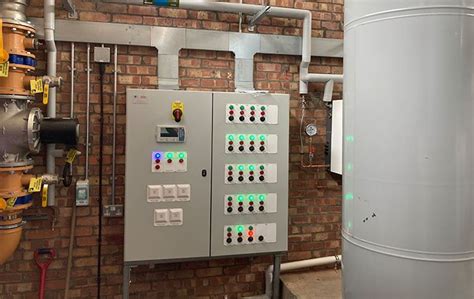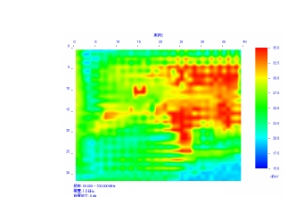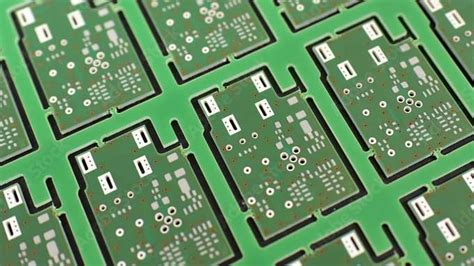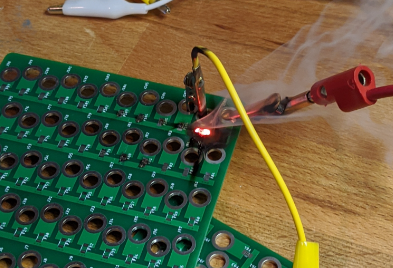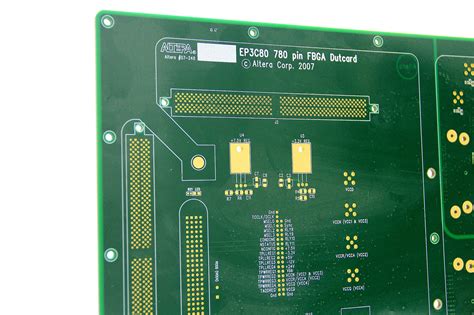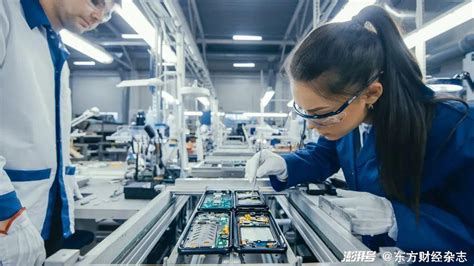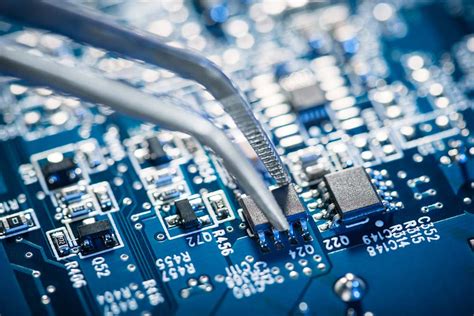Unlocking Innovation: The Power of Turnkey Prototype Assembly
Key Takeaways
The transformative nature of turnkey prototype assembly lies in its ability to consolidate various phases of product development into a single, cohesive process. This approach significantly enhances the efficiency of pcb assembly or pcba, as it allows teams to integrate design, engineering, and manufacturing seamlessly. By doing so, organizations can reduce time-to-market while minimizing costs associated with traditional methods. Furthermore, the collaborative advantage is evident in how departments work together harmoniously, fostering innovation and ensuring that every aspect of production aligns with strategic goals. The reduction of communication gaps among teams and the ability to iterate designs quickly lead to superior outcomes. As a result, many companies find themselves empowered to push technological boundaries further than ever before, illustrating how turnkey solutions not only simplify logistics but also drive unprecedented innovation across many sectors. Embracing this integrated approach has become essential for those looking to stay competitive and responsive in today’s fast-paced market environment.
The Concept of Turnkey Prototype Assembly: An Overview
Turnkey prototype assembly represents a remarkable advancement in the landscape of product development, particularly in the fields of pcb assembly and pcba. This approach streamlines the entire process, integrating multiple stages from design through to production into a single cohesive workflow. By enabling teams to collaboratively tackle challenges, it fosters an environment where innovation thrives.
In a turnkey model, companies can significantly reduce their time to market, as it eliminates the bottlenecks associated with multiple vendors and disconnected processes. The necessity for separate engagements is removed, allowing teams to focus on creativity and problem-solving instead of logistical challenges. Consequently, this model leads to meaningful cost savings while enhancing product quality through seamless integration.
“A strong partnership in turnkey solutions can transform visions into tangible products swiftly.”
This method encourages a focus on efficiency, encouraging designers and engineers to work side by side from the initial concept stage. Moreover, this alignment minimizes errors and improves communication—essential elements for achieving a successful prototype that meets market demands.
| Element | Traditional Assembly | Turnkey Prototype Assembly |
|---|---|---|
| Time to Market | Longer due to multiple vendors | Shorter due to integrated processes |
| Communication | Disconnected | Cohesive |
| Cost | Higher due to fragmented tasks | More competitive overall |
| Flexibility | Limited | Enhanced |
As companies embrace turnkey solutions, they empower themselves not just with modern capabilities but also with the willingness to innovate continuously. The strong synergy created within this framework is crucial for maintaining a competitive edge in an ever-evolving marketplace.
Streamlining Product Development: Benefits of Turnkey Solutions
The implementation of turnkey prototype assembly serves as a catalyst for seamless product development, significantly enhancing not only the efficiency of the process but also its overall effectiveness. By integrating design, engineering, and manufacturing into a unified workflow, companies can realize remarkable benefits that extend beyond mere cost savings. For instance, in the realm of pcb assembly or pcba, a cohesive approach allows for immediate feedback and rapid iterations based on real-time data, ultimately leading to a more refined end product. This collaborative advantage ensures that multidisciplinary teams work in synergy, enabling faster problem-solving and innovative solutions tailored to market needs. Moreover, as prototypes transition into production-ready items more swiftly, businesses can capitalize on shorter lead times and reduced development cycles. The strategic alignment offered by streamlined turnkey solutions not only supports faster market entry but also encourages ongoing innovation, equipping creators to respond nimbly to ever-changing demands in various industries.
Bridging Design and Manufacturing: The Collaborative Advantage
In today’s fast-paced market, the intersection of design and manufacturing is increasingly vital for fostering innovation. Turnkey prototype assembly serves as a bridge, allowing diverse teams to engage in a more integrated approach. By adopting a collaborative framework, organizations can effectively combine engineering, design, and production efforts, leading to a smoother transition from conceptualization to execution. This approach is particularly advantageous in areas like PCB assembly and PCBA, where precision and efficiency are paramount. Collaborative environments enable engineers and designers to communicate seamlessly, reducing the likelihood of errors that often arise from miscommunication. Moreover, the integration of different expertise within one cohesive team allows for faster iterations and problem-solving, which is essential when developing complex prototypes. This synergy not only accelerates product development cycles but also leads to innovative solutions that might not emerge in siloed settings. As we seek to harness the full potential of technology, the benefits of bridging design with manufacturing become increasingly clear, setting the stage for groundbreaking advancements across various industries.
Cost and Time Efficiency in Prototype Assembly
The process of turnkey prototype assembly markedly enhances cost and time efficiency in product development. By consolidating various stages of the manufacturing process, including pcb assembly, into one cohesive solution, businesses can significantly reduce turnaround times while minimizing financial expenditures. This integrated approach enables companies to streamline workflows and eliminate redundancies that often plague traditional product development pathways. Specifically, pcba services can be directly aligned with design and engineering efforts, fostering seamless collaboration amongst teams. As a result, decisions can be made more swiftly, reducing delays that typically arise during handoffs between separate entities. Furthermore, the use of turnkey solutions allows organizations to leverage specialized expertise across various domains without the need for extensive in-house investments. This fosters not only a leaner operational model but also encourages innovation by allowing teams to allocate resources more effectively, ultimately leading to faster iterations and improved product outcomes. By embracing turnkey prototype assembly, businesses are better positioned to respond rapidly to market demands, ensuring that they remain competitive in an ever-evolving landscape.
Real-World Success Stories: Innovation Through Turnkey Solutions
The implementation of turnkey prototype assembly has led to remarkable advancements across various industries, showcasing how effective collaboration and streamlined processes can catalyze innovation. For instance, a leading technology firm recently was able to reduce its time-to-market by 30% by adopting a comprehensive turnkey solution that integrated its pcb assembly and product design stages. This seamless coordination between their pcba and assembly teams allowed for rapid iterations, thus enabling the company to pivot and adapt to market demands swiftly. Similarly, in the automotive sector, a manufacturer utilized these turnkey services to enhance their prototype stages, resulting in a quicker transition from conceptual designs to functional vehicles. By harnessing the strengths of turnkey solutions, these examples underscore how manufacturers can overcome traditional barriers in product development while fostering an environment ripe for innovation. This shift not only optimizes resource allocation but also amplifies the capacity for creative experimentation within teams, ultimately redefining what is achievable in their respective fields.
Challenges in Turnkey Prototype Assembly and How to Overcome Them
While turnkey prototype assembly offers many advantages, certain challenges can arise during the implementation process. One significant issue is the integration of various stages of development, such as design and manufacturing. In traditional approaches, these processes often operate in silos, leading to miscommunication and inefficiencies. However, adopting a collaborative mindset and encouraging teams to engage in open dialogue can significantly mitigate these challenges.
Another challenge pertains to the evolving nature of technology and the need for rapid adaptations. As market demands shift, prototyping must keep pace, particularly concerning components like PCB assembly or PCBA. To address this, companies should invest in flexible manufacturing systems that allow for quick adjustments without compromising product integrity or cost-effectiveness.
Furthermore, sourcing reliable suppliers for components is crucial. Establishing strong partnerships with suppliers who understand the dynamics of turnkey solutions can streamline procurement processes and ensure quality standards are met consistently. By fostering these relationships, businesses can navigate supply chain complexities more effectively.
Ultimately, by recognizing potential pitfalls and proactively implementing strategies to overcome them, companies can fully harness the power of turnkey prototype assembly. This approach enables them to innovate swiftly while maintaining high standards across all phases of product development.
Future Trends in Prototype Assembly and Technological Advancements
As industries continue to evolve, the future of turnkey prototype assembly is being shaped by several key trends and technological advancements. One significant area of growth is the integration of advanced technologies such as automation, artificial intelligence, and the Internet of Things (IoT) within pcb assembly processes. These innovations allow companies to achieve greater precision and accuracy in pcba production, leading to improved product quality and faster time-to-market. Additionally, the rise of digital twins and simulation technologies enables teams to visualize and test prototypes in virtual environments before physical assembly, further reducing errors and enhancing collaborative innovation. Another critical trend is the shift toward sustainable practices within prototype assembly. Companies are increasingly prioritizing eco-friendly materials and processes to minimize their environmental impact while optimizing resources. This transition not only aligns with global sustainability goals but also appeals to a growing market segment that values responsible production methods. Furthermore, as remote work becomes more prevalent, cloud-based collaboration tools are transforming how teams communicate and share insights during the development process. This shift fosters a more integrated approach to turnkey solutions, promoting creativity and efficiency across diverse geographical locations. The convergence of these technological advancements ensures that turnkey prototype assembly will not only meet contemporary demands but also pave the way for future innovations across various industries.
Conclusion
As we conclude our exploration of turnkey prototype assembly, it is evident that this innovative approach is shaping the future of product development. By integrating crucial elements like design, engineering, and manufacturing processes into a unified strategy, companies can significantly enhance their efficiency and streamline the journey from concept to market-ready product. The pivotal role of pcb assembly and pcba cannot be overstated in this context, as they serve as the backbone for functional prototypes. This cohesion fosters collaboration among diverse teams, allowing for more seamless communication and quicker iterations. Moreover, the reduced timeframes and cost efficiencies associated with turnkey solutions become apparent when evaluating real-world success stories. These cases illustrate how organizations can leverage turnkey assembly to overcome challenges and harness new opportunities in an ever-evolving technological landscape. In essence, turnkey prototype assembly is not merely a process but a catalyst for unlocking innovation across various industries, empowering creators to push boundaries and achieve their visions more effectively than ever before.
FAQs
When considering turnkey prototype assembly, many inquiries arise regarding its implications and applications. One common question pertains to the relationship between pcb assembly and pcb assembly services. Specifically, individuals wonder how these services integrate into the broader turnkey process to foster innovation. The essence of a turnkey solution lies in its ability to deliver a comprehensive package where all aspects of development are managed under one roof. This enables companies to leverage the efficiency of combined processes such as design, engineering, and manufacturing, significantly streamlining the product development journey.
Many are also curious about the skills required when engaging with a turnkey prototype assembly provider. It’s crucial for teams to have a solid understanding of both pcba and its associated technologies, as this knowledge facilitates clearer communication, reduces bottlenecks, and enhances overall project execution efficiency. Additionally, businesses often need to grasp how these assemblies impact their prototyping costs; effective management and integration can lead to notable savings.
Lastly, questions surrounding timelines for taking a product from concept to completion are common. The beauty of turnkey solutions is their capacity to condense this timeline without sacrificing quality or innovation potential. By enabling closer collaboration between multidisciplinary teams throughout stages like pcb assembly, businesses can align faster with market demands while opening up new avenues for creativity and technological advancement.

